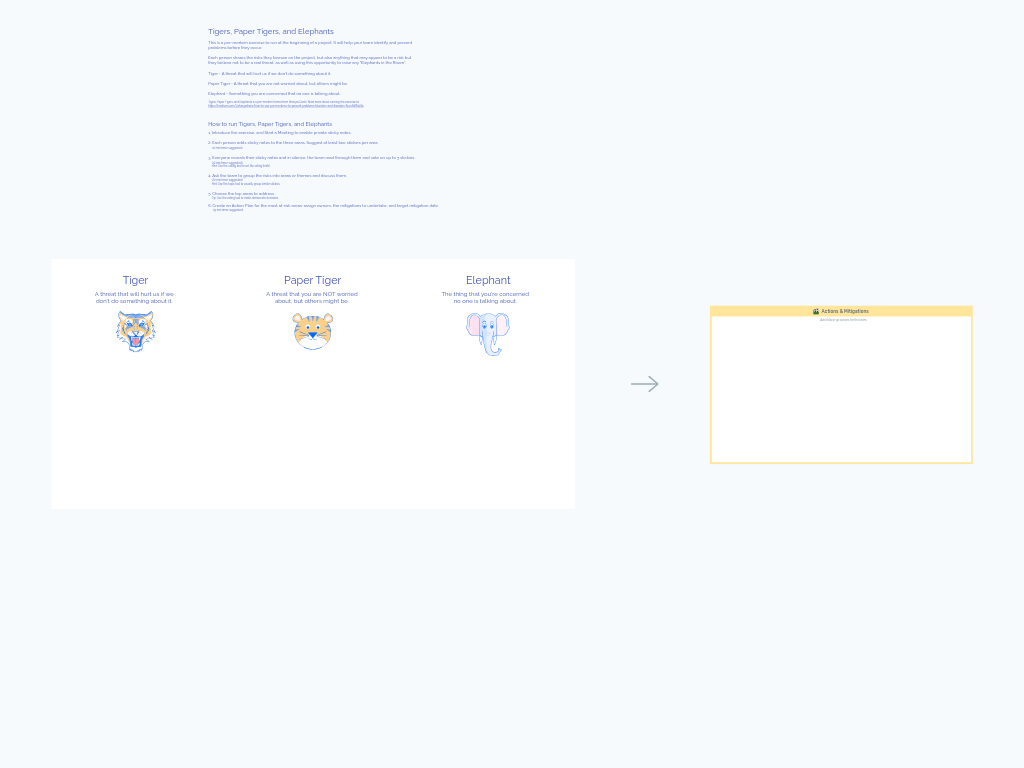Graveyard of Gloom: A Pre-mortem Template for Project Risk Management
Uncover potential fatal flaws in your upcoming project with the Graveyard of Gloom template—a powerful pre-mortem exercise that helps development teams identify risks before they become project-killing issues. By imagining your project as already failed, you'll generate valuable insights that can help prevent that gloomy future from becoming reality.
What Is a Graveyard of Gloom Pre-mortem?
A pre-mortem is a strategic risk management technique where team members imagine that their project has already failed and work backward to determine potential causes. Unlike a retrospective that examines past events, this futurespective approach anticipates problems before they occur.
The Graveyard of Gloom template uses a cemetery metaphor to visualize project failure, complete with:
- A tombstone featuring your project's name and eulogy
- Four distinct quadrants that help trace the project's demise:
- The Original Goals (what you aimed to achieve)
- The Original Plan (how you intended to achieve it)
- What Went Wrong (the fatal flaws that led to failure)
- The Result (the consequences of these failures)
Benefits & When to Use
This template is especially valuable:
- At the beginning of complex or high-risk projects
- When starting initiatives with significant dependencies
- Before committing substantial resources to a new effort
- When your team feels overly optimistic about a project's success
- To proactively identify blind spots in your planning
Teams using this pre-mortem approach report:
- More thorough risk identification than traditional planning
- Reduced cognitive bias in project planning
- Greater team psychological safety when raising concerns
- More robust mitigation strategies
- Higher project success rates through preventative planning
How to Run a Graveyard of Gloom Session
Duration: 45-60 minutes
Set the Scene (5 minutes)
- Introduce the concept: "We're going to imagine our project has completely failed"
- Write the project name at the top of the tombstone area
- Ask the team to adopt a mindset of "this project is already dead"
Define the Foundation (10 minutes)
- As a team, complete the "Original Goals" quadrant: What were you trying to accomplish?
- Fill in the "Original Plan" quadrant: How did you intend to achieve these goals?
Imagine Failure (10-15 minutes)
- Have each team member independently add sticky notes to:
- "What Went Wrong" quadrant: What factors caused the project to fail?
- "The Result" quadrant: What were the consequences of this failure?
- Have each team member independently add sticky notes to:
Share and Group (10-15 minutes)
- Each team member presents their failure scenarios
- Consolidate similar ideas and identify recurring themes
- Look for connections between different failure points
Prioritize Concerns (5-10 minutes)
- Conduct a voting round to identify the most critical risks
- Rearrange sticky notes according to likelihood and impact
Develop Mitigations (10-15 minutes)
- For each high-priority risk, brainstorm preventative measures
- Create specific action items to incorporate into your project plan
- Assign owners to each mitigation strategy
Bonus: Write the Eulogy (5 minutes)
- Collaboratively craft a brief eulogy for your project based on the identified failures
- This creative exercise often reveals additional insights and adds a memorable element to the session
Tips for a Successful Session
Embrace the morbid theme – The cemetery metaphor may feel uncomfortable at first, but leaning into it helps teams think more creatively about risks.
Encourage radical honesty – Make it clear that identifying risks isn't negative; it's a sign of commitment to project success.
Consider anonymity – For teams that might be hesitant to voice concerns, consider using anonymous contributions for the failure scenarios.
Focus on the specific project – Avoid generic risks and encourage concrete, contextual failure scenarios related to your specific initiative.
Track patterns – If similar risks appear across multiple pre-mortems, this signals systemic issues in your organization's project approach.
Revisit during the project – The value of this exercise extends beyond planning. Return to your Graveyard of Gloom mid-project to check if new risks have emerged or if your mitigations are effective.
By confronting potential failure head-on, your team can transform morbid predictions into proactive solutions—ensuring your project stays among the living rather than ending up as another tombstone in the Graveyard of Gloom.



